Flying over the water is an amazing feeling. One that I try to have every student of mine experience in their first lesson with me, which isn’t too hard considering that in El Médano we tend to have 20 knots and I am pulling them behind me with an elastic rope. Once you have felt what windsurfing can be, or rather, what windsurfing is all about, you are hooked. It is an amazing feeling and yet one that many people haven’t gotten the hang of properly despite advancing to more complex maneuvers. Even if it consists of only sailing back and forth, windsurfing consists mainly of sailing back and forth with some sporadic maneuvers in between. Learning to plane comes somewhere between learning to use the harness (making it easier to hold the power in the sail required to start and continue planing) and the foot-straps (which are only really useful to use when planing). You can start planing hooked in or hooked out of the harness depending on how well you can cope with the sudden increase of power in the sail and how well you react to gusts, waves and choppy water.
I can start planing on a 100 l and 5.7 when many others are struggling on their 130 l and 6.6. This is purely because of technique. Sure, having a bigger board and bigger sail helps, but the correct technique makes up for much more. Make sure you spend some time working on your planing technique and your suture sessions will be much more enjoyable as the range in which you can start to have fun on the water will be much larger.
First off, what is planing?
When we start to windsurf, the board sits in the water and begins to move through it much like a container ship would. However, as we pick up speed the boards lifts out of the water and we start to bounce over it like speedboats do. To get more technical, planing is when we are sailing (or gliding) over the water rather than pushing through it and the water that leaves the aft end of our board does so in a laminar cut-off fashion and not in a turbulent stern-enclosing way.
How to se start to plane? Very easy, by going fast enough. Sounds easy right? Many people will have experienced planing at some point or another when they start to use bigger sails and actually use the power that can be generated by them. However, we want to be able to plane with the smallest sail possible since the larger sails get, the more cumbersome they are. Holding the plane once we start windsurfing fast is not too difficult if we have a good grasp of the relative wind generated by our boards movement. The difficult part is starting the plane.
How to start planing
Check out the video series by Peter Hart
To get our board out of the water we need speed. Better yet, a surge of speed. How do we go about this? By generating a surge of power in the sail and transmitting that power into the board. Let’s look at this step by step.
– Stand upright: do not bend your knees or bring your bodyweight down. Your entire body weight should be used to lean into the wind to counter the pull of the sail once the wind hits without getting catapulted forwards.
– Change the course: Again remembering the wind forces in the sail, if we turn from the beam reach into the broad reach suddenly, the area of the sail will suddenly be creating only lift (because the board is meant to go nearly entirely in the direction of the wind) as the drag force is also going where we want to go.
– Shoulders away from the mast: As explained in the video you need to grab the boom a little further away from the boom with your front hand and lean far back with your body in order to get as much sail surface available to the wind and as much weight back to resist the pull AND to be able to generate a horizontal push on the board with your foot on the board instead of a vertical one with your weight.
– Keep your body tension: The less energy that is lost in this crucial moment the better. We must keep our body tense for these few seconds because if we allow our body to be slack, the pull of the sail will not be transmitted into the board but will be lost and we will have to start over again. Keep your upper body and front leg in a straight line so that you can…
– Push forwards with your front foot (pointing towards the bow). Focus on keeping your hips pushed forwards as letting them go back as their shoulders get pulled forwards is what I have seen many people fail in.
And now to top it all off, we need to do all this in one smooth and fluid movement and not in a jerky way.
Continuing to plane
So now we have managed to start planing. How to we keep it? I say focus mainly on your sail position with respect to the relative wind. Read my post on the physics of windsurfing if your haven’t already done so to read up on the importance of this and how to go about it. With strong wind we will usually find the correct position easily (or the mistakes are compensated for more) but in light winds, the wrong angle of attack on the sail can kill your plane.
Planing upwind
One of the most asked question regarding planing I get is this: how to I sail upwind? The problems are usually that people turn in to the wind too fast and slow down quickly or get a spin out.
The solution to both these problems is a correct body position. While on a beam reach we might still get away with the basic body position I explained in my post on how to windsurf once we start to use smaller boards, this will no longer work. This is because the board will sink easier and because we will most likely be using smaller fins despite generating much more sideways force due to planing.
What we need to do is shift our weight from the back foot on to the front foot and put pressure on the mast-foot while leaning the sail to the back of the board. This may seem like a mouthful but is the most compact way of solving the problem.
We lean the sail back to hold the closed reach, we transfer the weight onto the front foot to avoid a spin out (the back foot in the strap of course, don’t want you making a catapult because of some chop) and the pressure on the mast-foot is to transmit the power of the sail into the board to keep the speed.
I have included a video of me explaining the technique to planing as a bonus to those who purchase my e-guide which you can check out here.
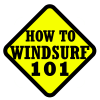
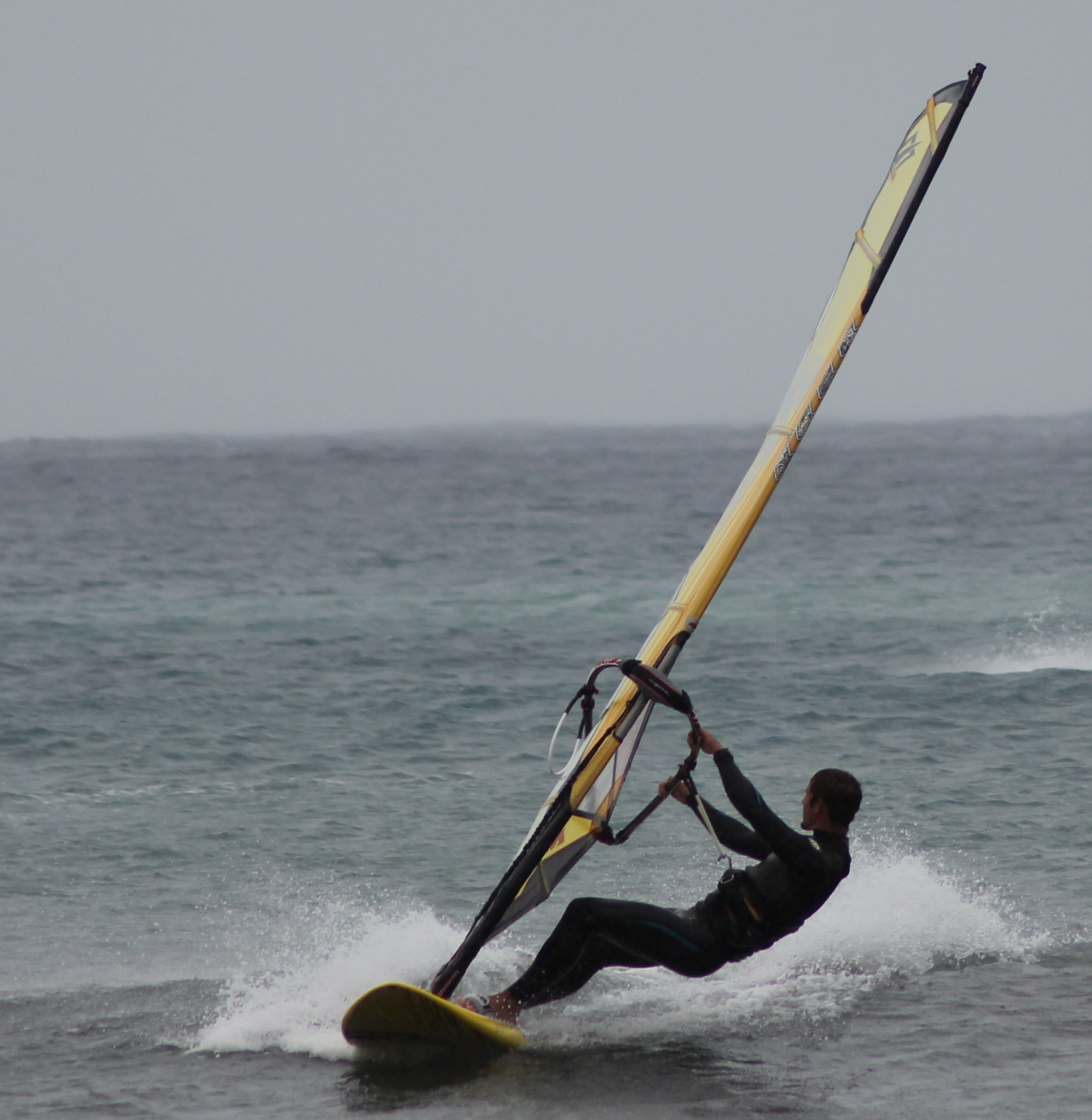
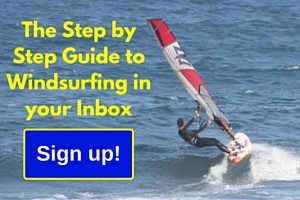


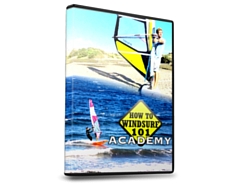
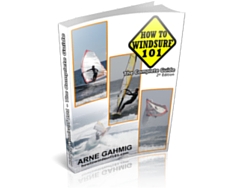
Many thanks for this series. I was just starting to plane at the end of this last season and you addressed a couple issues I was having.
Hey Ian! That is great to hear! Thanks for the feedback. It definitely incentivises me to keep at it. I hope to hear from your progress 🙂
Thanks for this lesson! The tips make a lot of sense.
I’m glad you find it useful Cedric! Let me know when you get to put it into practice!
Hi Arne
The video in this article wasn’t working. Could you please double check? I’ve been enjoying your tips so far, I’ve recently been able to hook in the harness, and keen to learn about planing!
I’m just trying to move down to a 133ltr from 191ltr. On the 191 I’ve had loads of fun planning etc.I’m determined to master this 133 but I find it really hard work, I can’t get it to plan.I took both boards with me yesterday as usual I had fun on the big board then decided to try the 133ltr a night mare. Nothing i tryed worked, no planning. Any tips. I’ve watched your video and there’s one or two things I’ll try.thanks
Gary, Are your using a harness on the big board and small board?, really important for the smaller board since the tail surface area is a lot smaller, need to get your weight to the mast foot base. I went from a 180L Bic Nova to a 142L Magic Ride with one problem, the MR came with a 48 cm fin and I would get so close to planning but not. Got a 54 cm True Ames Sweeper fin and then got up without a problem. I weight 185 lbs, and on the Nova a 51 cm fin worked good but it has a lot wider tail. Also, boards are not all the same. Look your board up to see if it got reviewed by Windsurf Mag. (they reviewed mine and were right on, while a similar board the 138L Tabou Wide while being wider than the MR was surprisingly hard to get to plane), http://www.windsurf.co.uk/test-type/freeride-b16/
That board kicked my ass today
I have certainly made some progress since I have started focusing on your information share. I have the following question though. I have managed to get my board on the plane whilst in the harness. However – the next day I could not get the board on the plane for the life of me 🙁 . I also find that when I start that I am on a beam reach. The moment I hook on to the harness I change direction to close reach and even close hauled position. To the point where I am stalling the sail.
I am sailing in Perth (Western Australia ) and we are blessed to have a sea breeze come through every late afternoon (18-20knots). I am currently on a JP Magic (154lts) with a 6.0 sail. I am a fairly big lad getting back into the sport and therefor the bigger board.
Hey Nick , i am also a big guy getting back into the sport from years ago. My rig is also JP MR 154, I also fight to sail down wind, hooked in off plane. I am just getting in the straps consistently, but rarely take out the 6.0, 7.5 is my go to in 15-25 knots (am in an area with small lakes and gusty wind) I am thinking now about adding one bigger sail.
I have since the mail added a 6.5 and 7.4 to my arsenal. It made all the difference to my sailing. I have one of the more experienced lads help me with the rigging of my sails since the are second hand and had some stretch to them. It made all the difference required. I’ll therefor support your suggestion to get bigger sails. Lastly beware of the catapults when on the fly with the bigger sails – it makes for spectacular crashes 🙂
great website! thanks for all info!
One thing I often see missed out, especially important for beginners, is mast foot placement. As far as I have picked up, further forward on the mast track gives better control and makes it easier to get into plane.
I am sailing in a 101 board and a 6.5 sail, i weight 75+ kg. Do you think i can start plaining?
the video is not working